
Overview
The article titled "Essential San Diego Digital Marketing Strategies for DTC Brands" primarily focuses on outlining crucial digital marketing strategies that direct-to-consumer (DTC) brands in San Diego must implement to enhance their online presence and drive sales. It emphasizes the importance of adopting these strategies with authority. Key strategies include:
- Conversion Rate Optimization (CRO)
- Search Engine Optimization (SEO)
- Content marketing
- Social media marketing
The article provides compelling evidence and case studies that demonstrate the effectiveness of these strategies in increasing conversion rates and customer engagement, thereby reinforcing the necessity for DTC brands to take action.
Introduction
In an increasingly competitive digital landscape, direct-to-consumer (DTC) brands in San Diego are actively seeking effective marketing strategies that not only capture attention but also drive conversions. This article explores essential digital marketing tactics specifically tailored for DTC companies, providing insights into:
- Data-driven approaches
- SEO optimization
- Compelling content marketing
- More
As these brands strive to enhance their online presence, the pivotal question arises: how can they effectively leverage these strategies to foster sustainable growth and cultivate lasting customer relationships?
Parah Group: Data-Driven Conversion Rate Optimization for DTC Brands
Parah Group distinguishes itself in the digital marketing landscape through its data-driven Conversion Rate Optimization (CRO) techniques, meticulously designed for direct-to-consumer (DTC) companies. Their robust methodology combines:
- User session recordings
- Competitor analysis
- Ongoing A/B testing
to reveal growth opportunities. Leveraging insights from consumer psychology, Parah Group formulates bespoke strategies that substantially elevate conversion rates and average order values (AOV).
For instance, a $30M apparel company witnessed an impressive 35% increase in conversion rates and a 10% rise in revenue per visitor following a homepage redesign that prioritized social proof and optimized pricing. In a similar vein, a $15M cleaning product label achieved an extraordinary 80% increase in AOV by introducing bundles, free shipping thresholds, and gamification strategies.
This comprehensive approach has delivered remarkable outcomes, including a 36% on advertising. Parah Group's unwavering commitment to fostering sustainable growth empowers DTC companies to optimize their existing resources effectively, all while avoiding unnecessary advertising expenditures.
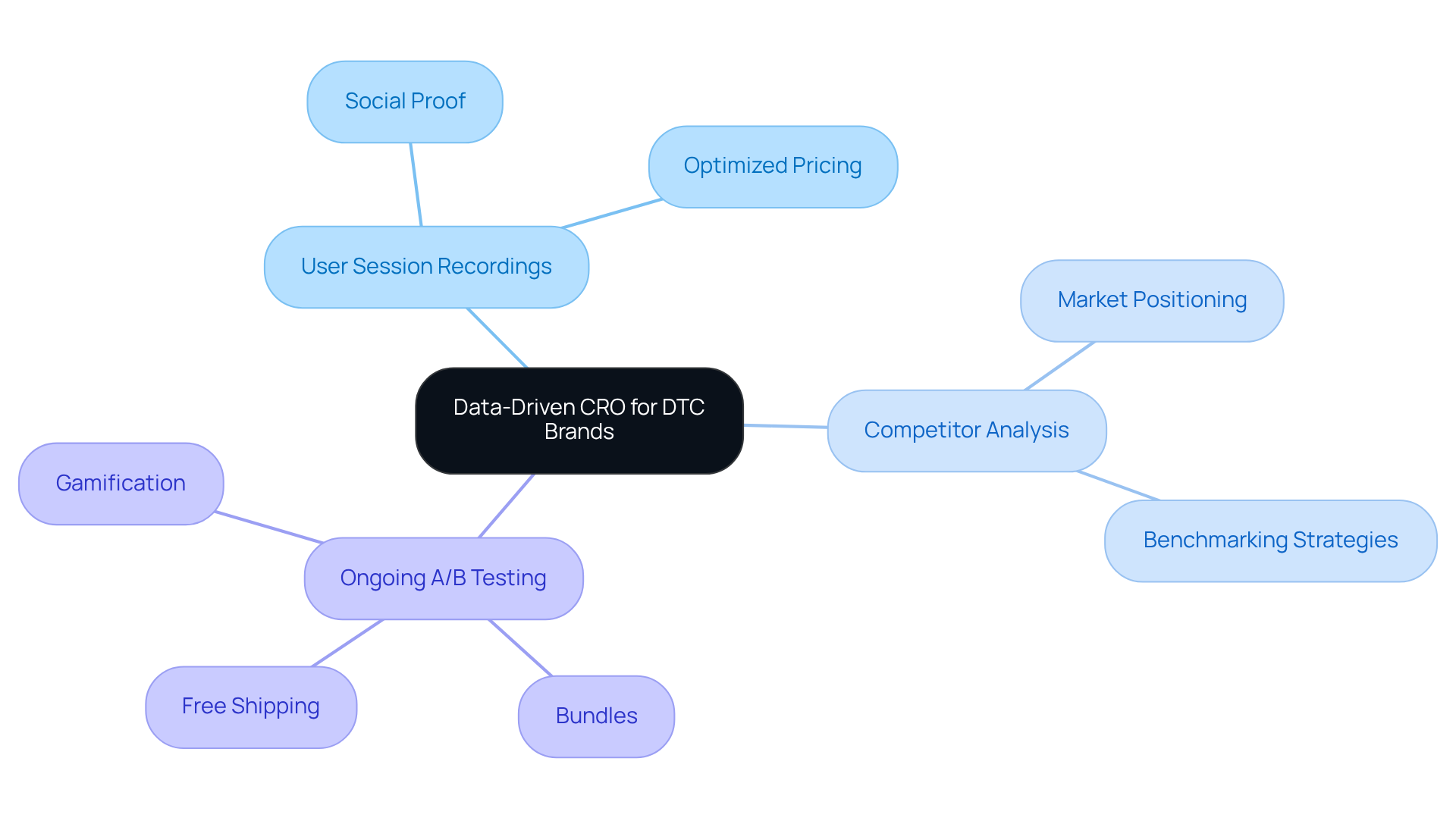
Search Engine Optimization: Boost Organic Traffic for DTC Brands
(SEO) stands as a crucial pillar for Direct-to-Consumer (DTC) companies striving to enhance their online visibility and attract organic traffic. By meticulously optimizing website content and accelerating site speed, brands can significantly elevate their search engine rankings. Notably, research reveals that 70% of consumers assert that page speed plays a pivotal role in their purchasing decisions from online shops, underscoring the necessity of prioritizing loading times.
Conducting comprehensive keyword research to pinpoint high-traffic terms relevant to products is imperative. Moreover, crafting high-quality, engaging content that addresses client pain points not only enriches user experience but also drives increased traffic. Regularly refreshing content and leveraging local SEO techniques can further amplify visibility in San Diego digital marketing, facilitating easier access for prospective clients.
Brands committed to ongoing performance evaluations can substantially enhance client experience and sales potential, as evidenced by a $30M apparel company that experienced a remarkable 35% rise in conversion rates following strategic optimizations.
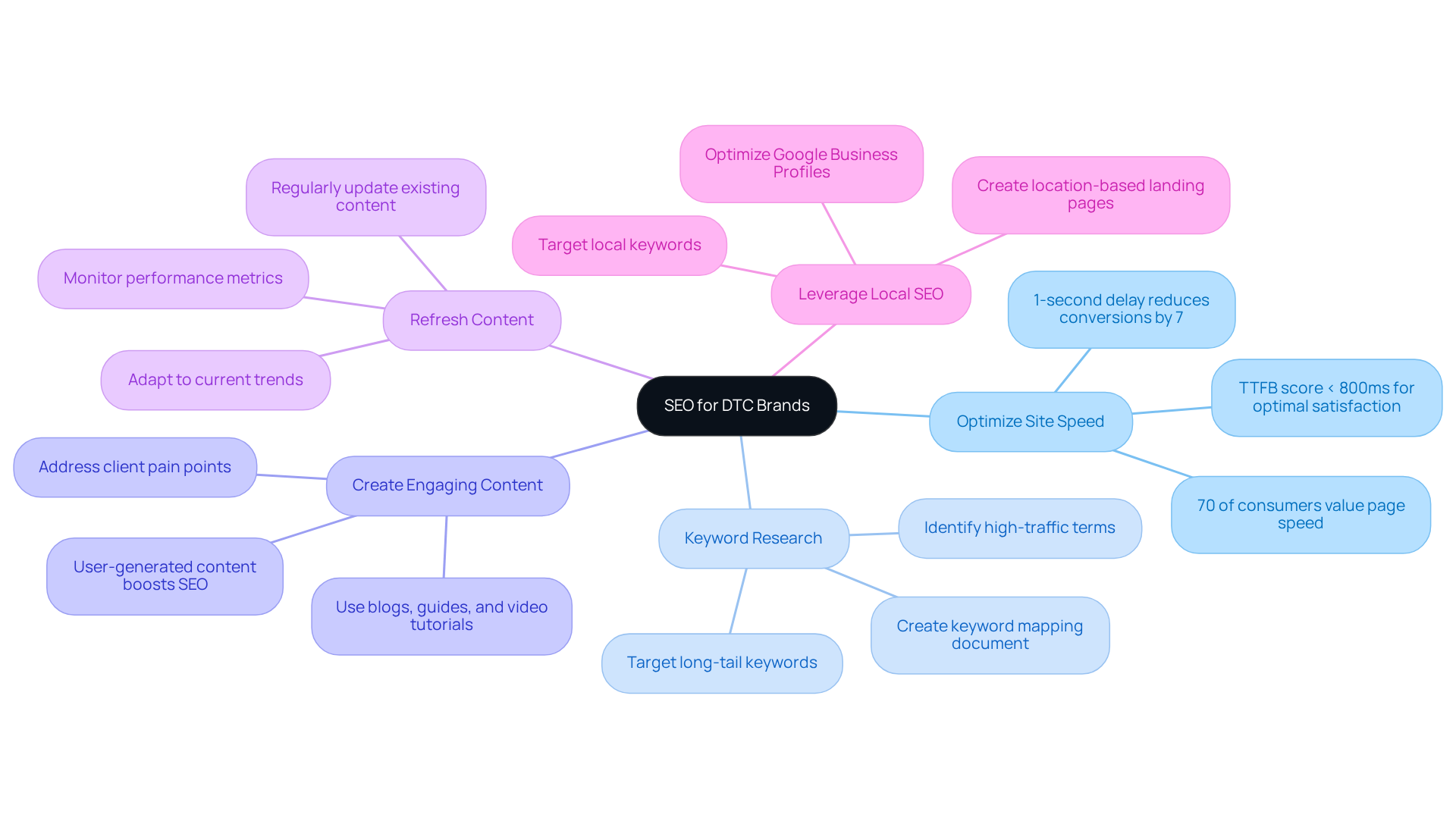
Content Marketing: Engage and Retain DTC Customers
Content marketing is essential for engaging and retaining clients in the DTC landscape. By crafting valuable, informative, and entertaining content, companies can position themselves as industry leaders and build trust with their audience. This encompasses various formats, including:
- blog posts
- videos
- infographics
- social media content that resonate with target audiences
A well-organized content calendar guarantees consistent posting, while effective storytelling techniques deepen emotional connections with consumers. For instance, companies like Lume have successfully harnessed user narratives to showcase their product's impact, thereby strengthening their relationship with their audience.
Moreover, leveraging and testimonials not only bolsters customer loyalty but also encourages repeat purchases, as consumers are more likely to engage with brands that reflect their values and experiences. Given that 93% of companies report a positive impact of SEO on their website performance, integrating storytelling into content marketing strategies can significantly enhance visibility and engagement, ultimately driving customer retention for direct-to-consumer businesses.
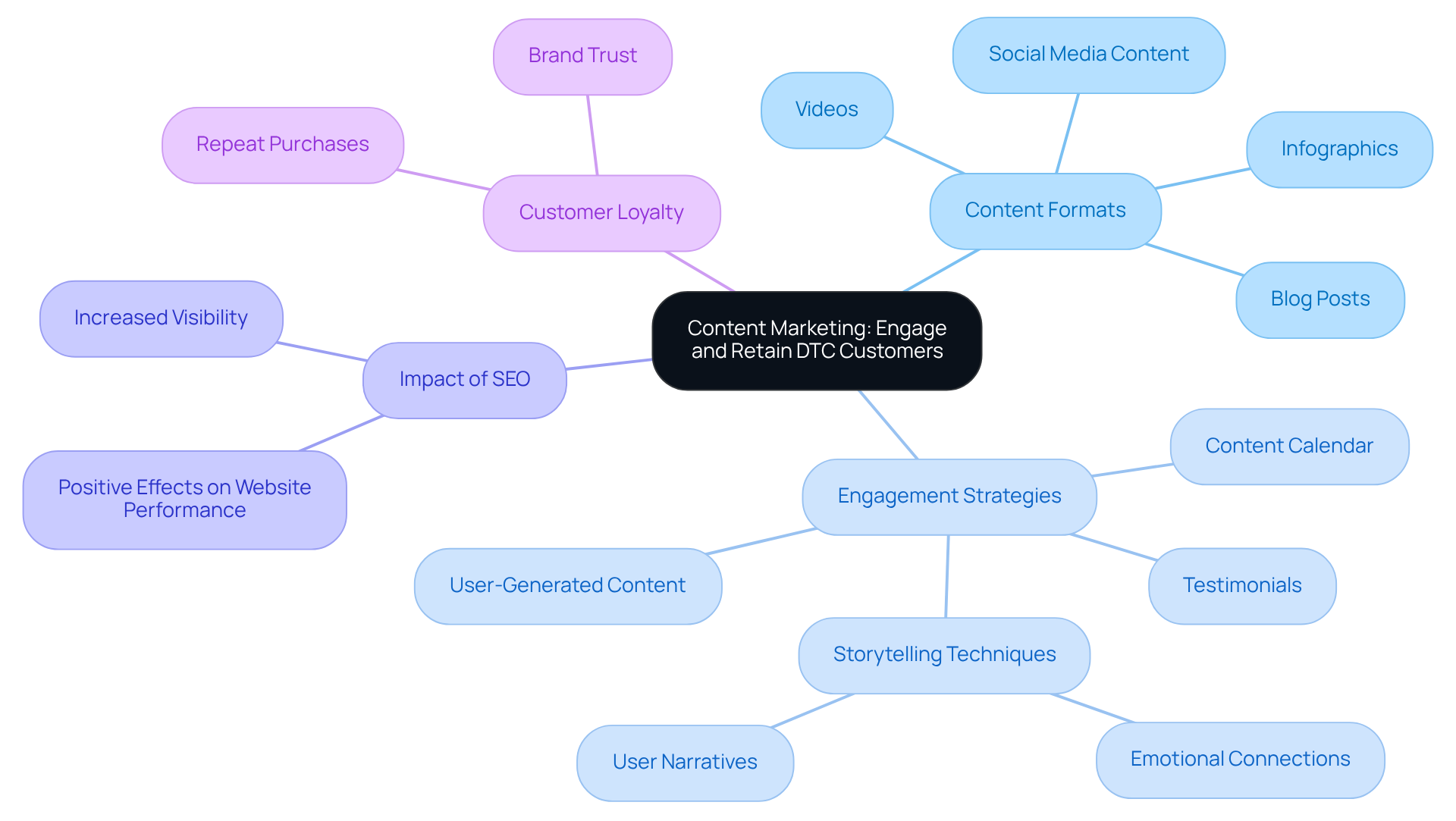
Social Media Marketing: Build Community and Drive Sales
Social media marketing is indispensable for DTC companies striving to cultivate a robust community and drive sales. Platforms like Instagram, Facebook, and TikTok empower companies to connect directly with their audience, share timely product updates, and highlight user-generated content. Moreover, incorporating interactive elements such as:
- Polls
- Quizzes
- Live Q&A sessions
significantly enhances engagement, fostering a profound sense of belonging among followers. Targeted advertising on these platforms allows companies to reach potential customers based on their interests and behaviors, thereby maximizing outreach. Collaborating with influencers not only amplifies visibility but also enhances credibility, resulting in increased traffic to the company's website. Looking ahead to 2025, influencer partnerships are poised to play a pivotal role in DTC sales, with companies leveraging these collaborations to forge genuine connections and elevate conversions.
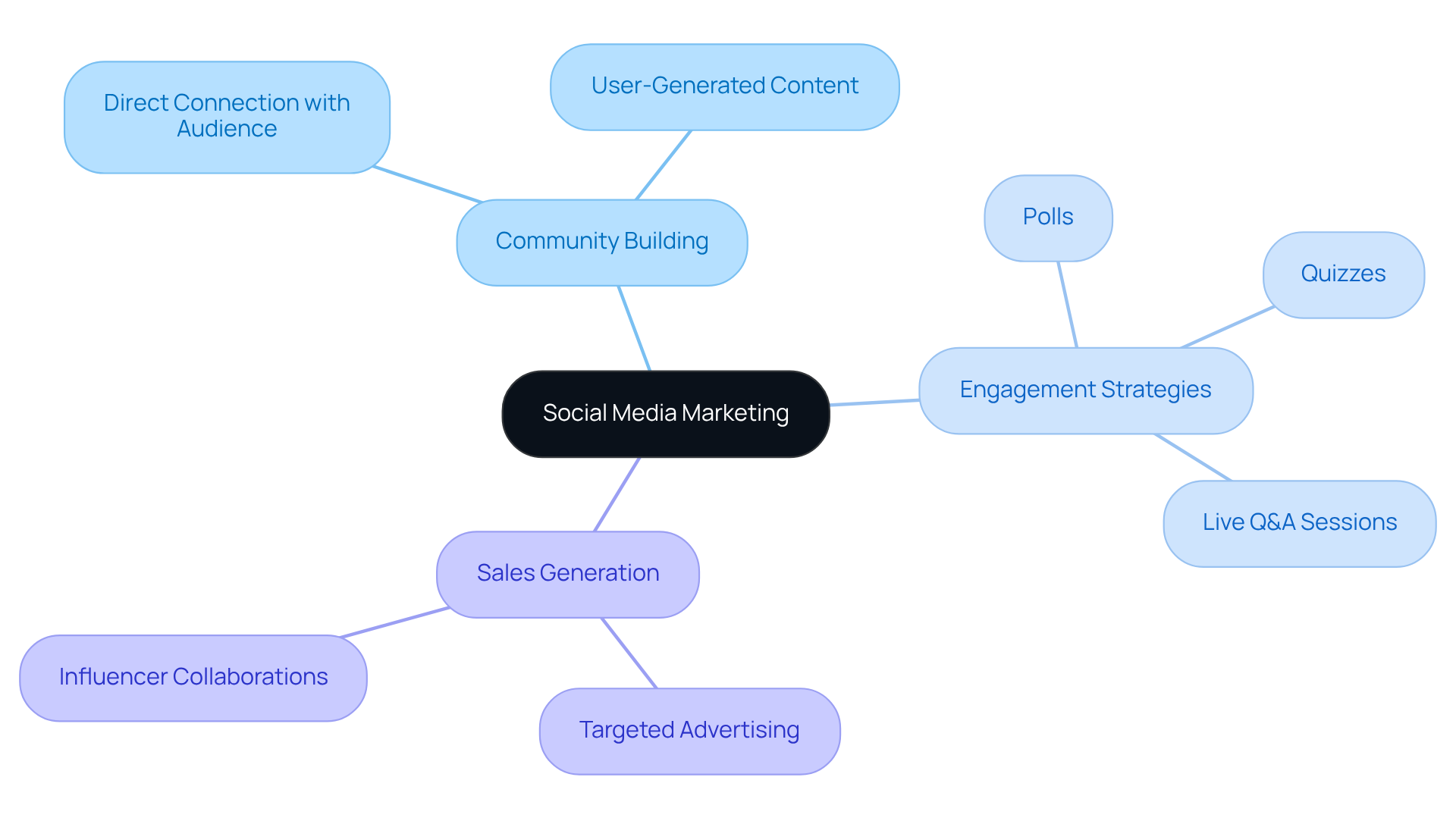
Email Marketing: Nurture Leads and Increase Conversions
Email marketing stands out as a powerful tool for generating leads and boosting conversions among DTC companies. By implementing effective segmentation strategies, brands can customize their email content to resonate with consumer behaviors and preferences. This approach results in more personalized and impactful communications. For example, segmented email campaigns achieve 14% higher open rates and 101% more clicks than their non-segmented counterparts, underscoring the effectiveness of targeted messaging.
Automated email workflows—including welcome series, abandoned cart reminders, and post-purchase follow-ups—are essential for enhancing client engagement. These workflows not only streamline communication but also ensure timely interactions that resonate with customers. Notably, abandoned cart emails boast an average open rate exceeding 43% and a conversion rate of 18.64%, highlighting their potential to recover lost sales.
A/B testing further elevates email performance by allowing companies to experiment with subject lines, content, and send times. This iterative approach helps identify what resonates best with the audience, leading to improved open and click-through rates. Regular analysis of email performance metrics is crucial for refining strategies and maximizing ROI.
As Ralph Zubiate, a Lead Content Strategist, succinctly states, "The rule now is simple: the right content, to the right person, at the right time." This principle underscores the in delivering value-driven email marketing campaigns. By recognizing the unique needs of various audience segments, DTC companies can foster stronger relationships and drive higher engagement, ultimately enhancing their overall marketing effectiveness.
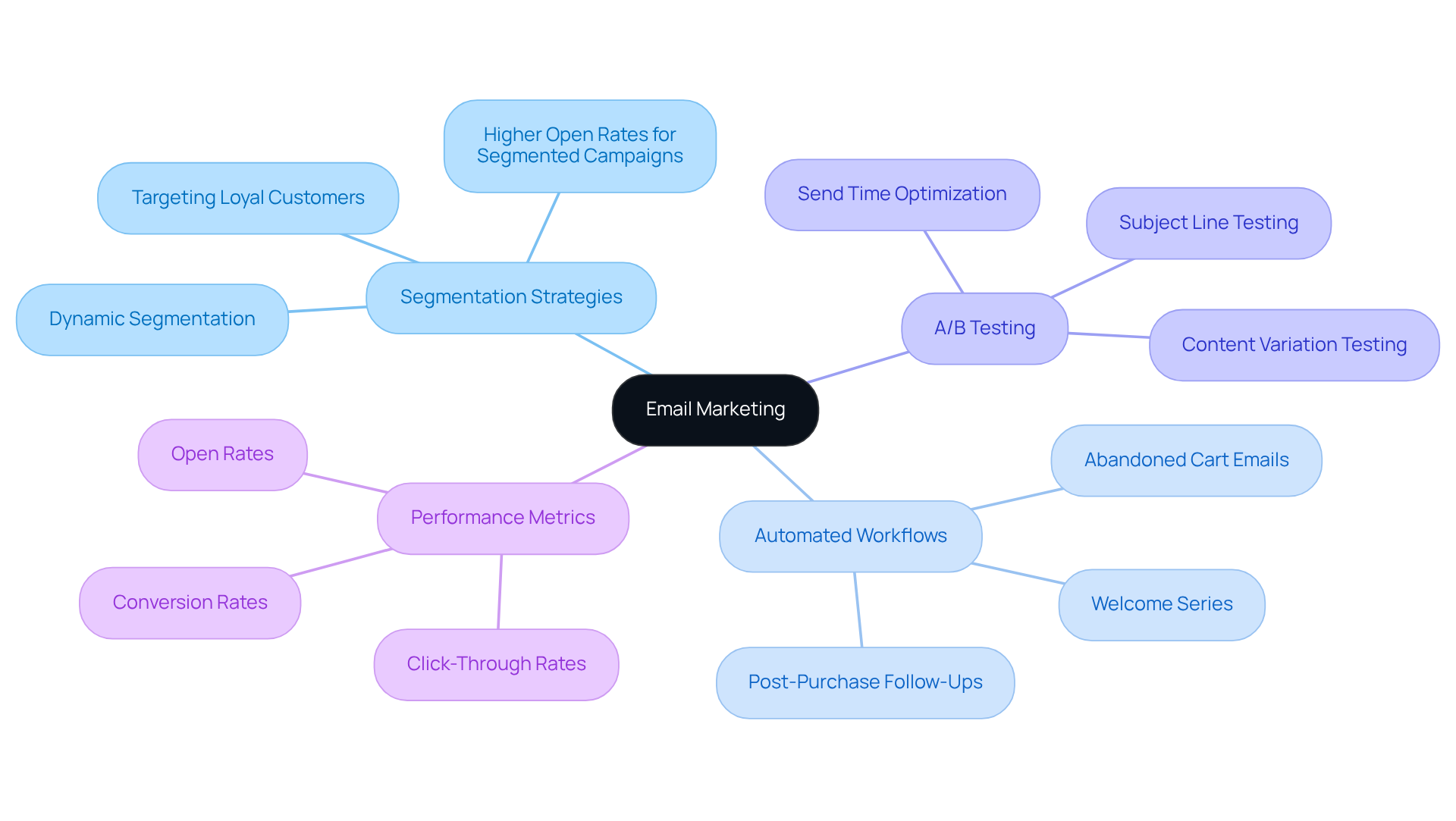
Pay-Per-Click Advertising: Drive Immediate Traffic to DTC Brands
Pay-Per-Click (PPC) advertising serves as a vital instrument for DTC companies aiming to generate immediate traffic and boost conversions. By leveraging platforms such as Google Ads and social media, these companies can precisely target specific demographics and interests, ensuring their advertisements resonate with the desired audience. The creation of compelling ad copy, complemented by striking visuals, significantly elevates click-through rates, thereby enhancing the overall effectiveness of the ads.
Implementing retargeting strategies proves particularly advantageous, allowing companies to reconnect with users who have previously engaged with their website. This approach not only increases the likelihood of conversion but also reinforces brand recall. For instance, a DTC company that utilized retargeting witnessed a substantial increase in conversions, highlighting the efficacy of this strategy in driving sales.
To and achieve the best possible outcomes, it is crucial for companies to consistently monitor and refine their PPC campaigns in accordance with performance metrics. Insights from San Diego digital marketing experts indicate that ongoing optimization, including A/B testing of ad creatives and fine-tuning targeting parameters, can significantly enhance ROI. Given that mobile devices account for over 60% of global web traffic, it is imperative that PPC campaigns are mobile-optimized to capture high-intent moments and improve user experience. By focusing on these strategies, DTC companies can adeptly navigate the competitive landscape and foster sustainable growth.
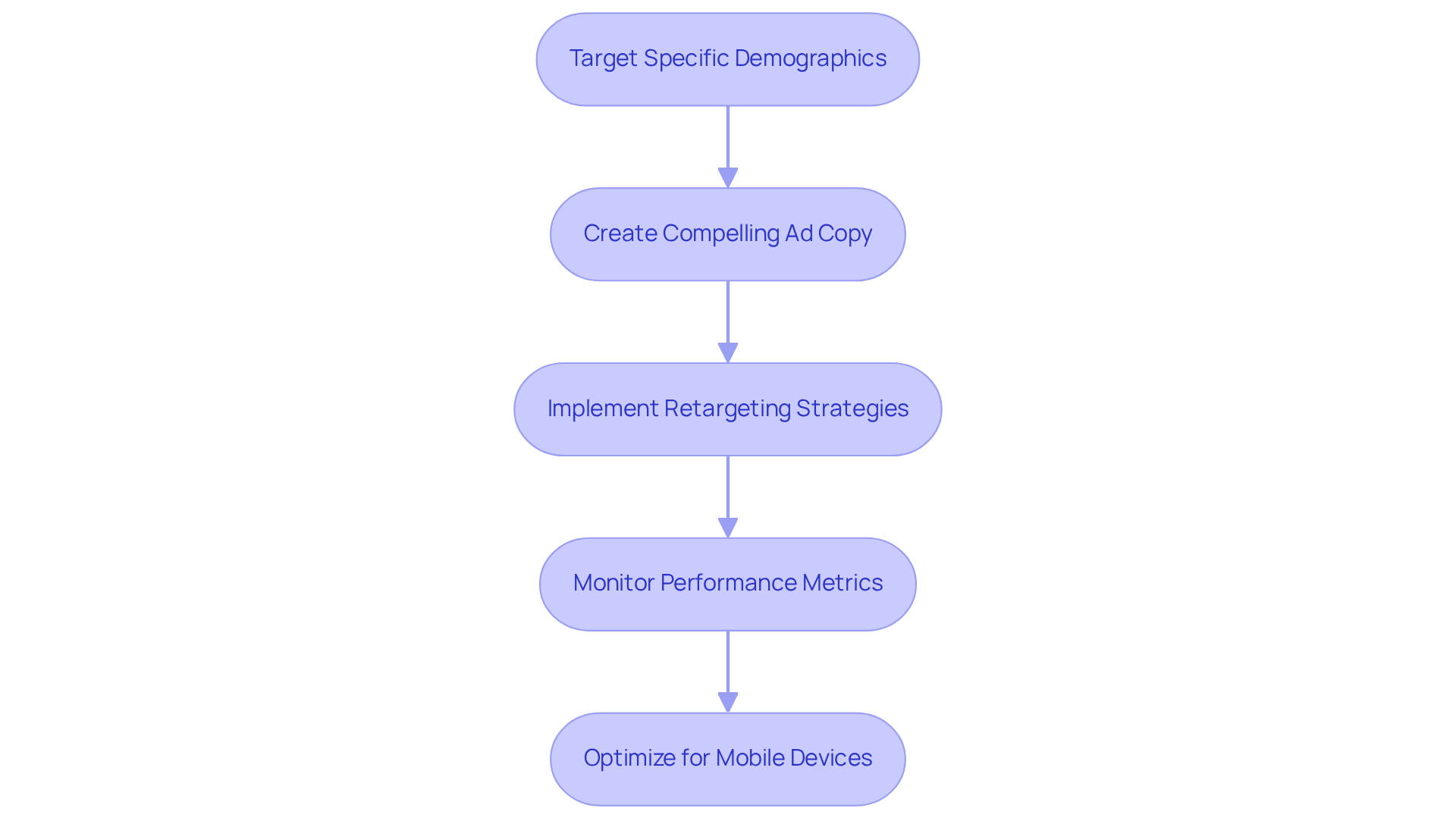
Influencer Marketing: Leverage Trust to Expand Reach
Influencer marketing has emerged as a pivotal strategy for DTC companies seeking to broaden their reach and cultivate consumer trust. By collaborating with influencers who align with their values, DTC companies can tap into established audiences and enhance their credibility. It is essential to choose influencers whose followers match the target audience; this ensures that the message reaches the appropriate individuals.
Authentic collaborations—such as product reviews, unboxing videos, and sponsored posts—can significantly boost engagement and conversions. Notably, micro-influencers, with their highly engaged and loyal audiences, provide a cost-effective means to penetrate niche markets and foster genuine connections with potential customers.
As Amy Burchill, SEO and Content Manager for Dash, asserts, 'The future of influence is not louder. It’s closer.' This sentiment underscores the importance of in today's fragmented digital landscape.
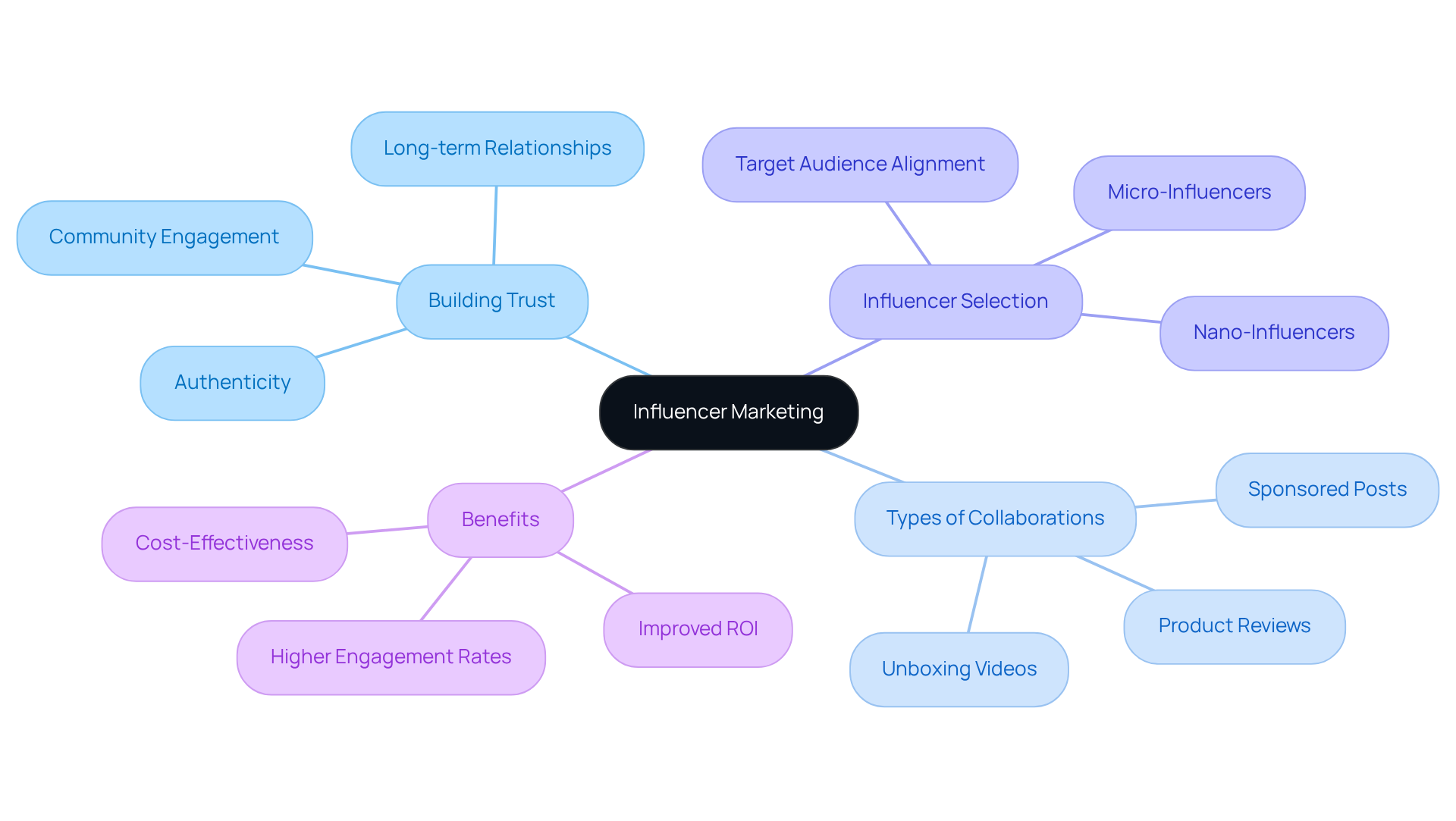
A/B Testing: Optimize Campaigns for Better Results
A/B testing stands as a crucial strategy for DTC companies intent on enhancing their marketing efforts and boosting conversion rates. By systematically testing variations of ads, landing pages, and email content, these companies can accurately identify which elements resonate most effectively with their audience. Notably, firms that have integrated A/B testing often report a 20-40% increase in click-through rates and a 15-30% rise in return on ad spend, particularly among high-growth direct-to-consumer entities leveraging this methodology.
To achieve precise results, per test is essential, allowing for a clear measurement of its impact. This structured approach minimizes assumptions and delivers actionable insights into customer preferences. Marketing professionals assert that organized experimentation transitions teams from reactive guesswork to proactive scaling, thereby fostering a culture of continuous improvement.
Regularly conducting A/B tests can yield significant enhancements in ROI over time. Successful DTC companies regard A/B testing as a continuous feedback loop rather than a one-time tactic, integrating it into their daily marketing operations. By embedding test-and-learn principles into their strategies, these companies can refine their campaigns based on real-time data, ultimately driving higher conversion rates and maximizing profitability. Parah Group's holistic approach to CRO guarantees that A/B testing is woven into a comprehensive strategy aimed at sustainable growth, concentrating on profitability and effective resource utilization.
It is imperative to conduct tests until results reach statistical significance, ensuring that the insights gained are both reliable and actionable. A/B testing provides clarity, speed, and control, establishing itself as an indispensable instrument for DTC companies striving for sustainable growth.
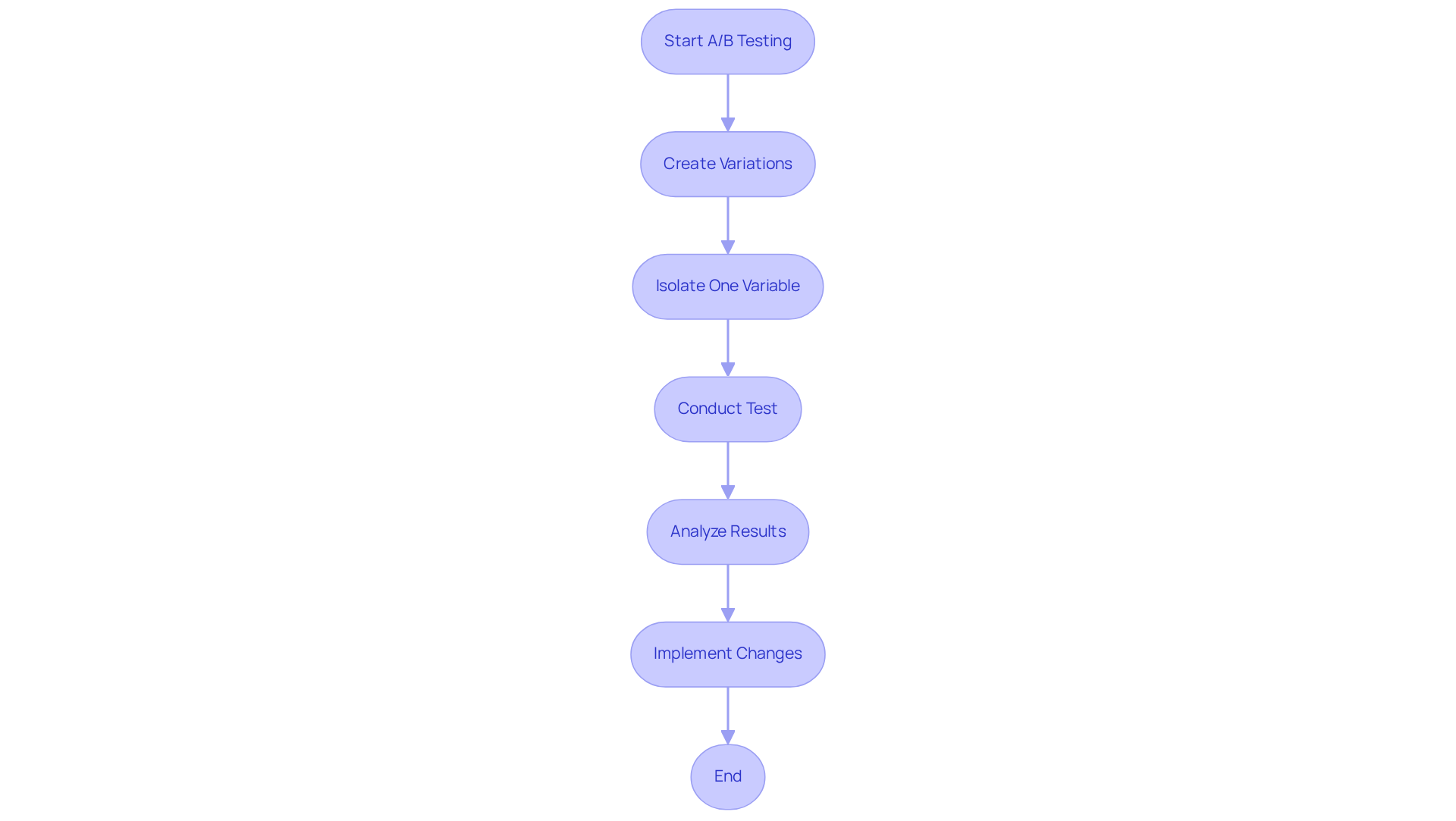
Customer Feedback Surveys: Enhance Strategies with Consumer Insights
Customer feedback surveys serve as a vital instrument for DTC companies to obtain direct insights from their audience. By implementing post-purchase surveys or integrating them into email campaigns, companies can assess customer satisfaction, preferences, and pinpoint areas for improvement. For example, Butternut Box has effectively leveraged feedback loops to enhance their subscription offerings, ensuring alignment with evolving consumer expectations. Analyzing this feedback empowers companies to make informed, data-driven decisions that refine product offerings and marketing strategies.
Current trends indicate that 61% of consumers believe specific labels provide a more tailored experience than multi-label retailers, underscoring the importance of personalized communication. Marketing experts assert that understanding client feedback is essential for improving product offerings. As Arjun Jolly, CEO of Adquadrant, emphasizes, "Customers need to feel heard. Ignoring their feedback signals that their opinions don’t matter, leading to churn."
Furthermore, harnessing customer insights to develop compelling case studies or testimonials can significantly enhance trust and credibility with potential customers. For instance, Parah Group has transformed the profitability of numerous DTC companies through innovative CRO strategies. One notable case study featured a $30M apparel company that experienced a 35% increase in conversion rates and a 10% rise in revenue per visitor after adopting strategies such as optimizing product pricing and gamifying the shopping experience. Regular engagement through surveys not only demonstrates a commitment to client needs but also to the company. In a competitive landscape where 66% of DTC companies cite rising client acquisition costs as their primary challenge, prioritizing consumer insights can provide a strategic advantage, enabling businesses to adapt and thrive. Importantly, DTC companies within the top 25% enjoy lifetime values approximately five times greater than the average, highlighting the critical role of client retention and feedback in driving profitability.

Web Design and User Experience: Create Seamless Customer Journeys
Web design and (UX) are indispensable for DTC brands striving to create seamless client journeys. A well-structured website that prioritizes intuitive navigation significantly boosts user satisfaction and drives conversions. Responsive design is imperative, ensuring optimal performance across all devices, particularly mobile, which accounts for 77% of retail website traffic, predominantly from smartphones.
Clear calls-to-action (CTAs) and minimized loading times are essential for enhancing user engagement; studies indicate that 53% of mobile users abandon sites that take longer than three seconds to load, and every additional 100 ms delay can lead to fewer page visits. Furthermore, incorporating elements such as client reviews, personalized product suggestions, and efficient checkout processes greatly improves the shopping experience.
Regular testing and optimization based on user feedback and analytics, including tools like heatmaps and A/B testing, are critical for ongoing enhancement, resulting in increased sales and customer loyalty. Our approach transcends mere A/B testing; we delve into a comprehensive array of growth strategies, ensuring your paid advertisements and landing pages are fully aligned.
Real-world examples illustrate that eCommerce sites featuring videos on their product pages achieve at least an 80% increase in conversion rates, underscoring the significance of a user-centered approach in San Diego digital marketing strategies. Conducting regular UX audits to pinpoint areas for improvement and guarantee your website meets user expectations is vital for maximizing profitability and fostering sustainable growth.
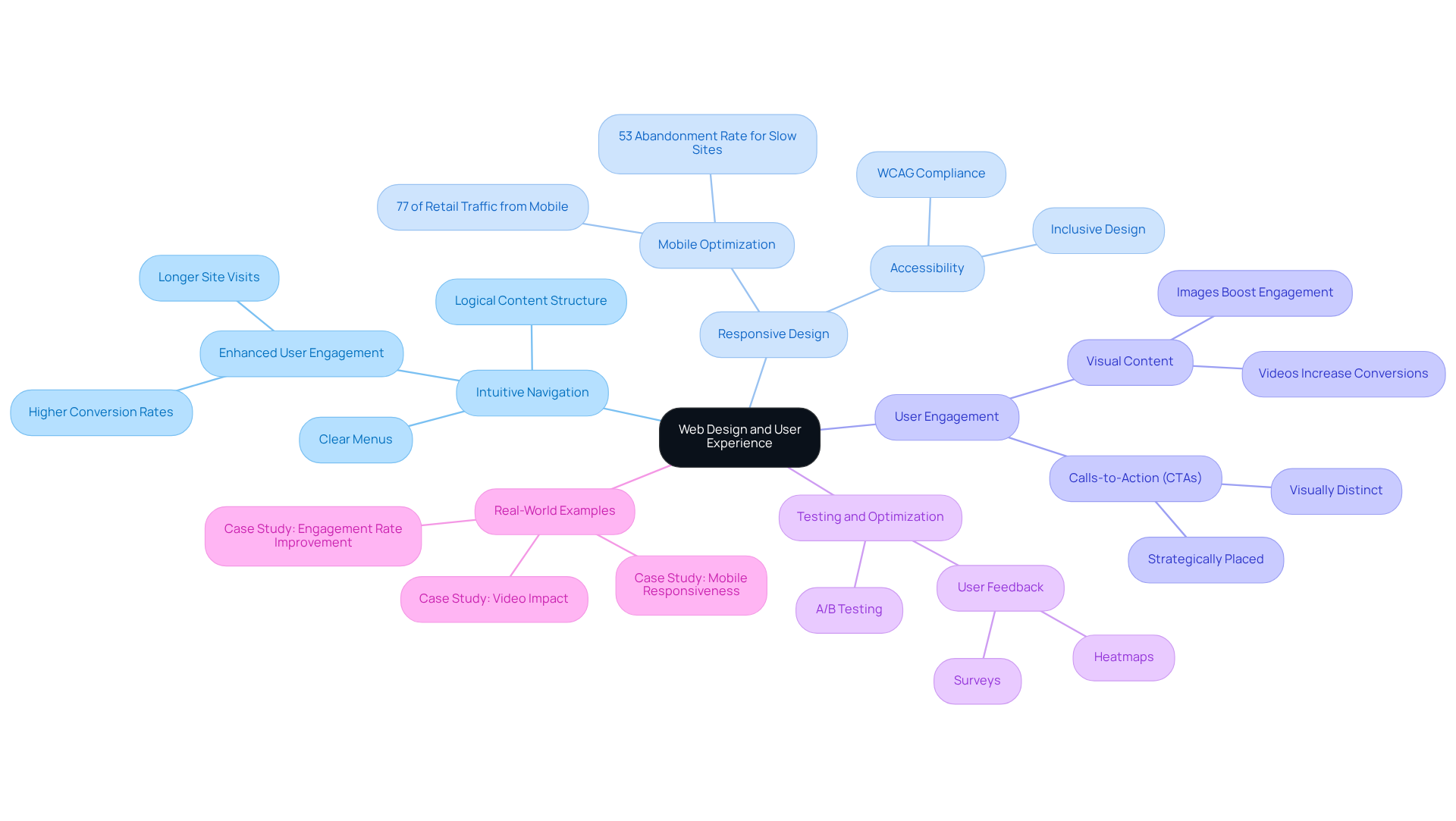
Conclusion
In the competitive landscape of direct-to-consumer (DTC) marketing, adopting essential digital strategies is not just beneficial; it is crucial for brands aiming for sustainable growth. By leveraging data-driven approaches, optimizing online presence, and engaging customers through targeted content, DTC companies can significantly enhance their visibility and conversion rates. The integration of various marketing tactics—from social media engagement to effective email campaigns—establishes a comprehensive strategy that addresses consumer needs and preferences.
Key insights from this discussion underscore the importance of:
- Conversion Rate Optimization (CRO)
- Search Engine Optimization (SEO)
- User experience design in enhancing customer interactions.
Furthermore, strategies such as:
- Influencer marketing
- A/B testing
- Customer feedback surveys
provide actionable pathways for brands to refine their marketing efforts. Real-world examples illustrate the tangible benefits of these approaches, demonstrating how companies can achieve remarkable increases in conversion rates and overall revenue.
As DTC brands navigate the complexities of the digital marketplace, embracing these strategies is essential for their survival and growth. The future of marketing hinges on understanding and responding to consumer behavior, fostering genuine connections, and continuously optimizing campaigns for better results. By prioritizing these elements, DTC companies can not only survive but thrive in an ever-evolving environment, ensuring they remain competitive and relevant in the years to come.
Frequently Asked Questions
What is Parah Group's approach to Conversion Rate Optimization (CRO) for DTC brands?
Parah Group uses a data-driven methodology for CRO that includes user session recordings, competitor analysis, and ongoing A/B testing to identify growth opportunities for direct-to-consumer (DTC) companies.
How does Parah Group leverage consumer psychology in its strategies?
Parah Group formulates bespoke strategies based on insights from consumer psychology, which helps to significantly elevate conversion rates and average order values (AOV) for DTC brands.
Can you provide an example of success achieved through Parah Group's CRO techniques?
A $30M apparel company experienced a 35% increase in conversion rates and a 10% rise in revenue per visitor after a homepage redesign that focused on social proof and optimized pricing.
What are some outcomes of Parah Group's CRO strategies?
Parah Group's comprehensive approach has resulted in a 36% boost in ROI on advertising, helping DTC companies optimize resources and avoid unnecessary advertising costs.
Why is Search Engine Optimization (SEO) important for DTC brands?
SEO is crucial for DTC companies as it enhances online visibility and attracts organic traffic, significantly impacting their search engine rankings and ultimately sales.
What factors contribute to effective SEO for DTC brands?
Effective SEO involves optimizing website content, accelerating site speed, conducting keyword research, and creating high-quality content that addresses client pain points.
How does page speed affect consumer purchasing decisions?
Research indicates that 70% of consumers consider page speed a pivotal factor in their purchasing decisions from online shops, highlighting the importance of prioritizing loading times.
What role does content marketing play in engaging DTC customers?
Content marketing helps DTC companies engage and retain clients by providing valuable, informative, and entertaining content, positioning them as industry leaders and building trust with their audience.
What types of content should DTC brands focus on for effective marketing?
DTC brands should focus on various content formats, including blog posts, videos, infographics, and social media content that resonate with their target audiences.
How can storytelling enhance content marketing strategies for DTC brands?
Effective storytelling deepens emotional connections with consumers, and integrating user narratives can strengthen relationships, leading to increased customer loyalty and repeat purchases.
What impact does SEO have on website performance for companies?
93% of companies report a positive impact of SEO on their website performance, indicating that it can significantly enhance visibility and engagement, driving customer retention for DTC businesses.
FAQs











